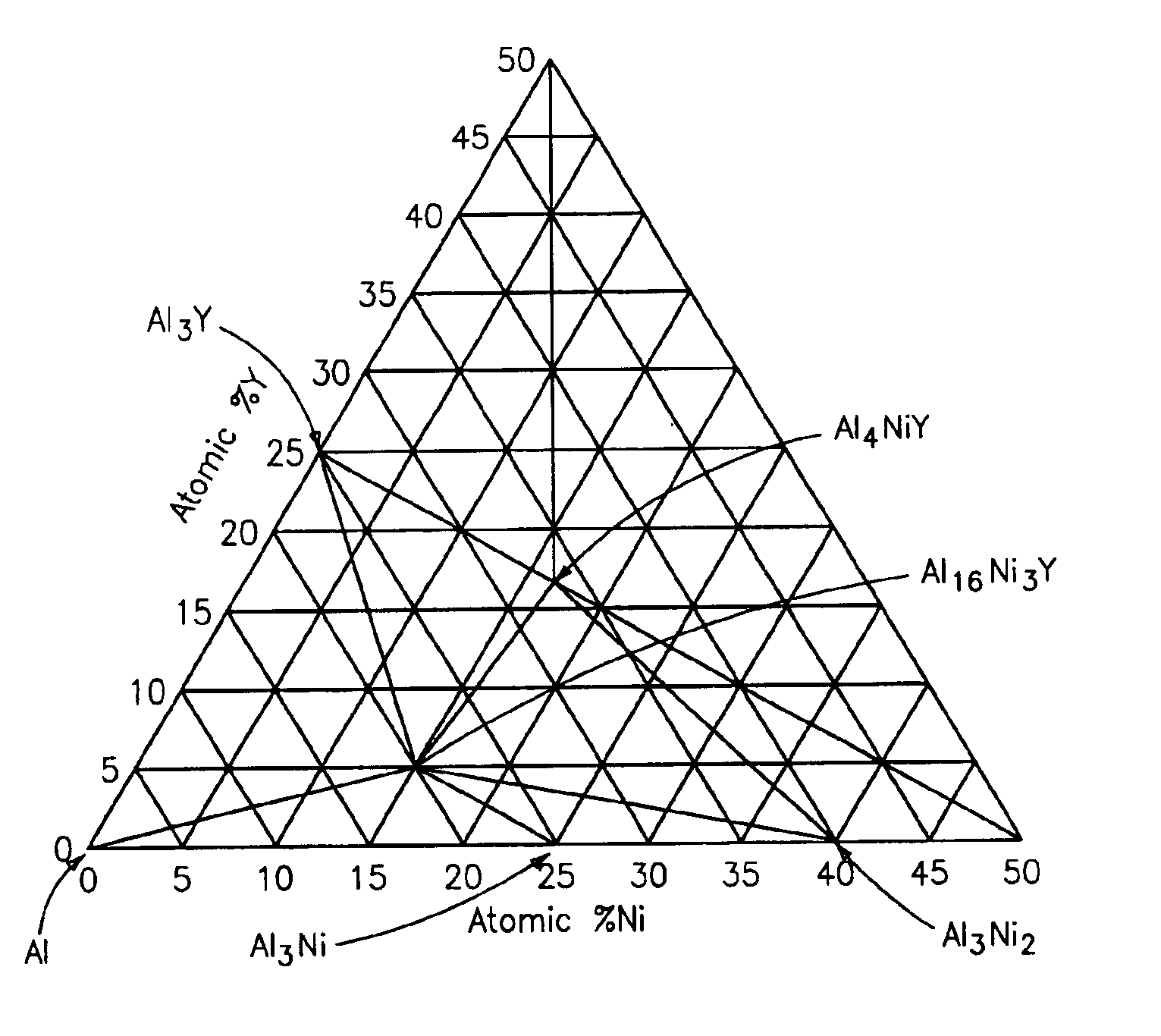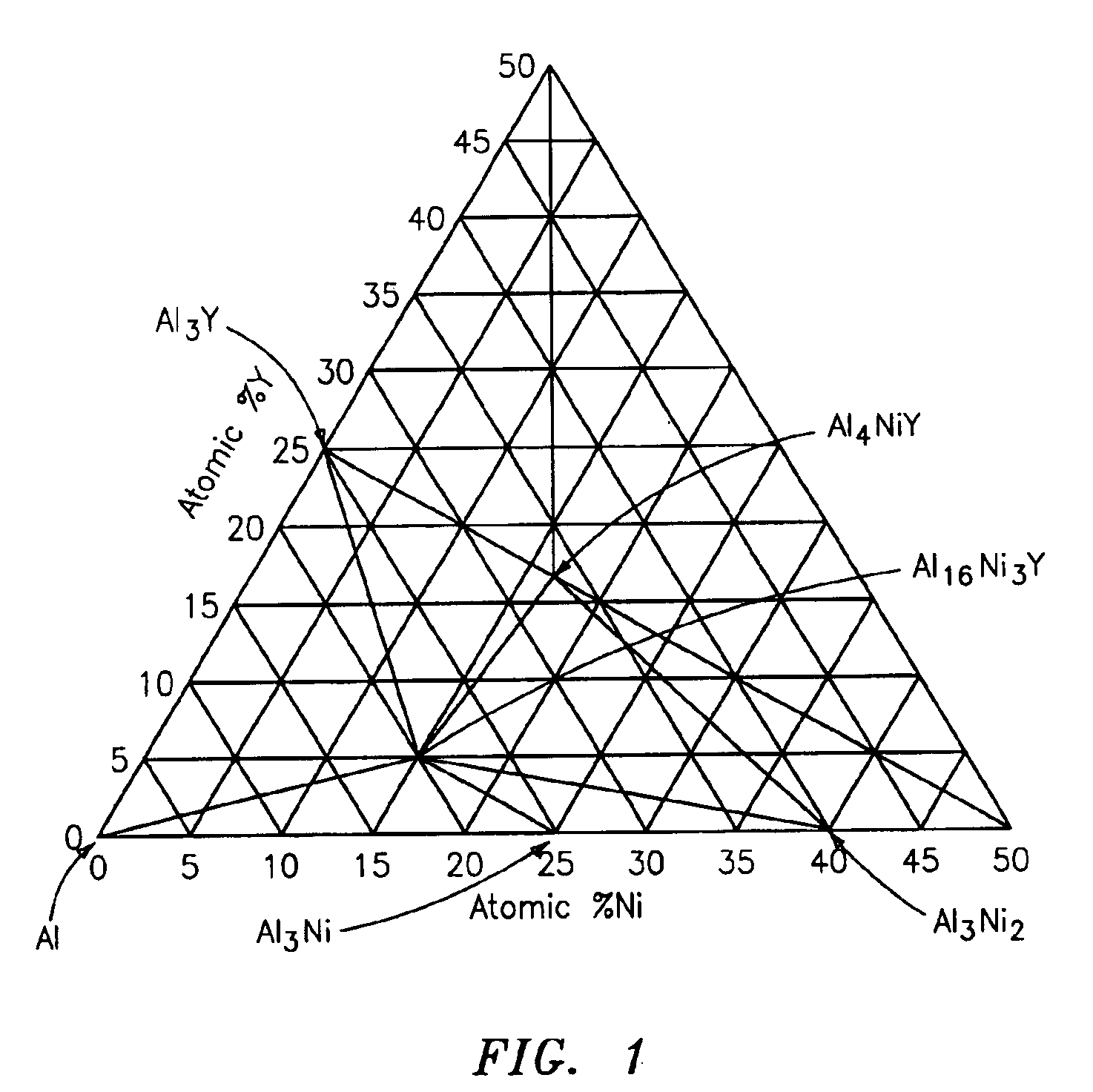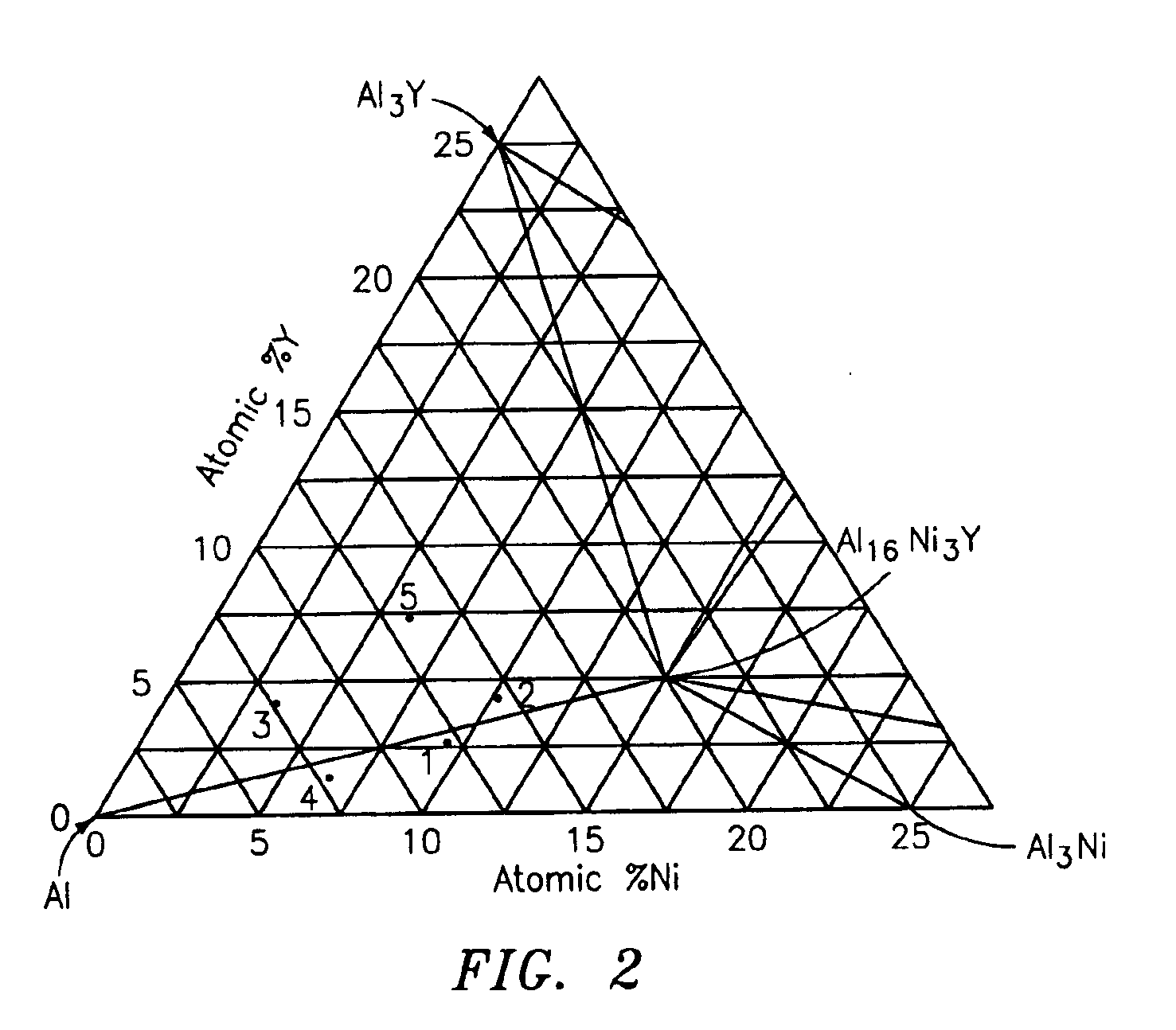Aluminum base alloys
a technology of base alloys and alloys, applied in the field of aluminum base alloys, can solve the problems of alloys that are dead brittle, lack of structural materials, and lack of bulk and achieves little if any ductility in glassy sta
- Summary
- Abstract
- Description
- Claims
- Application Information
AI Technical Summary
Benefits of technology
Problems solved by technology
Method used
Image
Examples
Embodiment Construction
[0015]A room temperature isotherm for the Al—Y—Ni system is shown in FIG. 1. Table 1, below, shows five alloy compositions of the Al—Y—Ni system, with properties thereof.
[0016]
TABLE 1Room Temperature Tensile PropertiesAlloyVolume Percent (v / o)UltimateCompositionsof Intermetallic Phases Present0.2% YieldStrengthElongationAlloyWeight PercentAlAl3YAl3NiAl16Ni3YTotal v / oStrength (Ksi)(Ksi)(%)1Al—7.2Y—17.7Ni4104555991.592.2 2.12Al—12.3Y—17.9Ni26706774BrittleBrittleBrittle3Al—12.4Y—6.6Ni66130213472.079.0 5.64Al—5.0Y—12.5Ni65010253546.061.011.05Al—19.6Y—10.3Ni422703158BrittleBrittleBrittle
[0017]FIG. 2 shows a close up of the Al rich end of the Al—Y—Ni system shown in FIG. 1, along with the five alloy compositions prepared in accordance with Table 1.
[0018]Each of the alloys in Table 1 was devitrified. Reference to Table 1 will show that the properties of these alloys vary directly with the volume fraction of the second phase. When the volume fraction exceeds about 40% the alloys become too ...
PUM
| Property | Measurement | Unit |
|---|---|---|
| Temperature | aaaaa | aaaaa |
| Fraction | aaaaa | aaaaa |
| Fraction | aaaaa | aaaaa |
Abstract
Description
Claims
Application Information
 Login to View More
Login to View More - R&D
- Intellectual Property
- Life Sciences
- Materials
- Tech Scout
- Unparalleled Data Quality
- Higher Quality Content
- 60% Fewer Hallucinations
Browse by: Latest US Patents, China's latest patents, Technical Efficacy Thesaurus, Application Domain, Technology Topic, Popular Technical Reports.
© 2025 PatSnap. All rights reserved.Legal|Privacy policy|Modern Slavery Act Transparency Statement|Sitemap|About US| Contact US: help@patsnap.com



